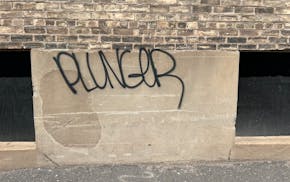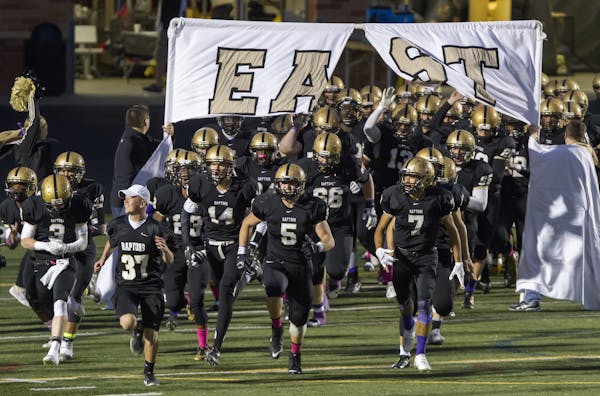Elisa McCann has never known a day without pain.
Minnesota's medical marijuana program has yet to turn a profit.
Whether the two can help each other will be at the heart of Minnesota's next great marijuana debate.
Just months after the first Minnesota cannabis clinic opened its doors, Health Commissioner Ed Ehlinger is debating whether to add intractable pain to the shortlist of conditions that qualify Minnesotans to legally medicate with marijuana. Pain patients like 2-year-old Elisa — born with a rare genetic condition that causes her skin to blister and tear — make up the majority of patients in many of the states with medical cannabis programs.
It's a move some, particularly in law enforcement and the medical community, worry could leave the young program vulnerable to abuse.
For months, the health department has canvassed the state, holding public hearings and soliciting testimony from people desperate to see the medical marijuana program expanded, and from those who prefer to keep the program small and restricted to specific diseases like cancer or muscular dystrophy.
Elisa's parents and doctor hope cannabis oil could offer her relief from the sort of everyday agony that narcotics can't touch.
Children with Elisa's condition, epidermolysis bullosa, are born with skin as fragile as butterfly wings. The slightest friction can blister and tear the skin, leaving Elisa covered with raw sores, inside and out.
"Think about having a third-degree burn. It hurts," said her mother, Gabriella McCann. Many children with Elisa's condition are taking morphine by age 3. "There's got to be something different. They can't live their whole life on morphine."
Still not profitable
October was harvest time at LeafLine's production facility in Cottage Grove. Top-heavy plants nod under the grow lights, their numbered tags indicating whether they'll be refined into seizure medication or anti-nausea treatments for cancer patients.
For now, the operation is so small that CEO Manny Munson-Regala pitched in to help trim flowers and hang plants up to dry before processing.
"We are planning for nice, steady growth and we are managing our costs with that assumption in mind," said Munson-Regala, a former assistant state health commissioner who went from overseeing the medical cannabis rollout to leading one of the cannabis businesses. "Realistically, we're not making money until sometime next year."
Medical marijuana has had a slow launch in Minnesota. As of Friday, the state's two multimillion-dollar cannabis start-ups had a customer base of 618. That's a fraction of the 5,000 patients the state estimated might enroll in the program's early years.
Low enrollment numbers have put a strain on the two companies picked to grow, refine and sell Minnesota's medical marijuana. The other company, Minnesota Medical Solutions, announced price hikes the same month the program went into effect. Both companies are waiting for demand to catch up to their growing stockpiles of oil, pills and tinctures.
"We're a ways away from making money," said Dr. Kyle Kingsley, an emergency room physician-turned-CEO of Minnesota Medical Solutions, which opened the doors of the state's first dispensary in downtown Minneapolis at the stroke of midnight on July 1. Three customers were waiting to buy that night.
MinnMed, which went on to open a second storefront in Rochester later in the summer, estimates it now has some 300 active cannabis customers, whose out-of-pocket costs for a month's supply can range from less than $200 to well over $1,000.
Both manufacturers have deep pockets that can help them through the current dearth of patients. LeafLine, started by members of the Bachman florist chain, raised more than $15.8 million in start-up capital and built a $10 million headquarters and production site.
"I don't need to make that back in Year One," Munson-Regala said. "That would be a pretty bad business model. I need to cover operating expense. … The folks who gave us money, our investors, knew this was a risky investment and knew it was a long-term play. I'm not getting any sense from them that I need to be returning revenue to them tomorrow."
Minnesota Medical Solutions raised $16.6 million in capital in 2015 — the largest capital campaign for a cannabis start-up in the nation this year. MinnMed's parent company, Vireo, was also tapped to set up a manufacturing operation for New York's new medical marijuana program. MinnMed could turn a profit with or without an influx of pain patients, Kingsley said, but more customers would make his job easier.
"The inclusion of pain and expanding the patient base is probably the most important thing to bring down costs," he said.
Tight restrictions
Twenty-three states have medical marijuana programs, each with its own list of qualifying conditions — ranging from cancer to post-traumatic stress to Alzheimer's to arthritis. Seventeen out of 23 include pain as a criteria, and for those that do, pain patients often make up the bulk of the customer base. Pain patients accounted for 93 percent of medical marijuana customers in Colorado last year. In Arizona, they were 71 percent of the state's 60,000-plus active medical marijuana cardholders.
Minnesota's program covers nine conditions, including terminal illnesses, seizure disorders and Crohn's disease. The program was never meant to be a much of a moneymaker for the state. Unlike Colorado — which in August alone collected $13 million in taxes, licenses and fees from recreational and medical marijuana sales — Minnesota doesn't tax cannabis and strictly limits who can use the drug, where they can buy it, and how they can take it. A $200 annual registration fee — reduced to $50 for low-income customers — helps fund the Office of Medical Cannabis.
Medical marijuana is legal only in pill or liquid form in Minnesota. Patients can buy the refined product only from one of eight dispensaries that will eventually open across the state. Three have opened so far — in Minneapolis, Eagan and Rochester. To enroll in a program, patients need their doctor or another primary health care provider to certify that they have one of the nine qualifying conditions.
But some patients who could enroll have been unable to do so because their doctor or clinic has opted out of the program, leery of the paperwork involved or of a drug the federal government considers a banned substance with no recognized medical use.
Opening the program to people in pain — even with the restriction that a doctor has to certify that the pain is serious, chronic and not responding to conventional treatments — could bring in tens of thousands of new customers.
'Need to be careful'
That's what worries watchdogs.
Minnesota has one of the most restrictive laws in the nation, and most of those restrictions were put in place at the urging of law enforcement. Gov. Mark Dayton's support for legalization hinged on law enforcement support, and that support was won only after intractable pain was cut as a qualifying condition. Champlin Police Chief Dave Kolb represents the Minnesota Chiefs of Police Association on the state's Medical Cannabis Therapeutic Research Task Force. So far, he said, law enforcement concerns about the program have been eased by the slow, cautious rollout.
The prospect of thousands of new customers for the program raises new concerns.
"When this [program] is expanded, we just need to be careful. We need to be cognizant and ask ourselves, 'Will it expand beyond legitimate use?' " he said.
No one wants to deny a little girl pain relief, he said, but "pain" is a more nebulous criteria than, say, cancer. And there will always be groups pushing for the program to be expanded, or for recreational use to be allowed.
Minnesota's program has been open long enough for some patients to feel the effects. Some joined the program but dropped out and returned to buying from the black market. Some live too far away from the three clinics currently serving the entire state.
But there are success stories, too. Mark Petersen enrolled in the program to combat the nausea and chronic wasting of a disease he's been battling for more than two decades.
Each time he returns to the LeafLine Labs clinic in Eagan for a refill, "I pull up my shirt and say, 'Look at this! I can pinch an inch!' "
Petersen was skeptical about the state program, which costs him twice as much as the pot he could buy on the street. But the manufactured cannabis oil he's taking now, he said, leaves him clearheaded and able to function, and stirs up the sort of appetite that makes him want to make himself a real meal — not just sit on the couch and eat a bag of Doritos.
He's delighted by the weight he's been able to put on. The $640-a-month price tag is hefty for someone who's retired and on disability, but Petersen said he prefers that cost to buying on the black market and risking a bag of marijuana tainted with mold — or worse.
When hugs hurt
While Minnesota debates intractable pain, Elisa McCann toddles across the floor of her playroom in St. Paul, waving a Lego man and smiling through blistered lips. The fact that she's walking, talking and playing is in large part thanks to an experimental stem cell transplant she received after the family moved here.
Dr. Jakub Tolar, director of the University of Minnesota's Stem Cell Institute and a bone-marrow transplant physician, treats some of the state's sickest children, including a growing number with the same condition as Elisa. The treatment has improved her life, but it's not a cure. Hugs hurt. Swallowing can blister her throat. Rapid-eye movements when she dreams can blister her eyeballs. There's very little Tolar can prescribe to help Elisa.
"It is probably the most horrible disease I have ever seen," Tolar said during a recent public forum on whether to add pain patients to the cannabis program.
"They are bandaged from neck to toe," he said. "They take baths in vinegar and bleach. Their parents have to inflict pain on them because they have to remove these bandages at night. And there are no opiates, no pain medications I can prescribe … I can't control the pain. "
An advisory panel will submit its findings regarding intractable pain to the health commissioner in November. Ehlinger will make his ruling by Jan. 1. If he agrees to expand the medical cannabis program to include intractable pain, the first patients could enter the program in August 2016.
Jennifer Brooks • 612-673-4008
Two North Loop condos combined into one 'dreamy' space listed for $649,900

Minneapolis murder suspect arrested after decadelong escape
What to know about a possible Minnesota equal rights amendment on abortion rights

